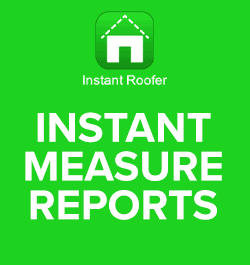UP TO THE MINUTE
Finding a payment method that works for your business and your customer

By Kristen Frisa, Truss.
There are many different payment methods in the construction business, but one of the best is progress payments because they keep the project moving.
Money and payment can be a sticking point in the industry and stressful for contractors, but one way that can make it all a little easier is utilizing a progress payment system. Progress payments are what they sound like, payment as progress is made before the end of the projects. Essentially, in this system, the client and the contractor lay out different milestones or percentages at which they will get a portion of the agreed payment for the project, rather than one check upon completion.
Progress payments help contractors maintain cash flow to keep a project moving, especially on long construction projects. Below, the experts at Truss discuss some of the benefits and challenges of using progress payments and how to implement them to keep project finances in order.
When to submit progress payments
The point in time a contractor submits progress payments depends on the billing structure set out in the original construction contract. The following are some of the most common construction pricing models that can dictate the timing of progress payments.
-
Deposit and final payment dictate an upfront payment before work commences, followed by the final payment after the project’s completion
-
Time-based bills according to the amount of time that’s passed (often a month at a time) and other applicable costs for that time period.
-
Percent complete bills for the amount of the project completed as a percentage of the total project schedule, and then adds on other applicable costs for that progress period. The exact progress completed is sometimes difficult to pin down.
-
Milestone payments involve billing when a specific section of work is finished. One example might be a payment due after mechanical work is complete in a new building.
Payment applications for progress billing
On smaller or less complex projects, contractors simply submit a single-page invoice when payment is due. General contractors running larger or longer-term projects may require their subcontractors to submit payment application forms.
Like an invoice, the payment application includes details of completed work. It also includes supporting documents such as:
-
Materials receipts
-
Job site photos
-
Any change orders since the last payment
-
Applicable lien waivers.
While there is no standard payment application form across the construction industry, there are template forms available that help ensure all necessary information is present.
Benefits of progress payments
Progress payments have advantages for both owners and contractors. Not only do contractors get paid on a more predictable schedule, but owners have a better chance to view the project’s progress along the way. Here are some of the main benefits of progress payments on construction projects.
Maintain healthy cash flow
When contractors embark on projects without the benefit of progress billing, they essentially agree to float all construction costs until after the project is complete. Without intervening payments, the contractor has to pay for all total costs out-of-pocket, including labor, construction equipment, materials, permitting costs and more. The contractor may have to take out loans or start financing payments to maintain the project, which could last months or even years.
Progress payments provide incoming payments at regular intervals to help float project costs along the way, avoiding cash flow issues and debt.
Maintain client’s cash flow
Construction project costs run in the tens of thousands, or even hundreds of thousands, of dollars. Clients may have trouble coming up with the cash at once, so progress payments can help spread the payment over a series of months while still getting the bill paid by project closeout.
Manage risk of non-payment
Occasionally, a contractor has the misfortune of working with a cash-strapped client who can’t afford to pay their construction bills. Progress payments give contractors tools to handle late payments – they may notice payments issues before clients are too far in arrears, and they can stop work in response to missed progress payments, giving clients an extra incentive to pay.
Challenges of progress payments
Progress payments are very common in the construction industry, particularly for long and drawn-out projects, but they can cause some difficulties for construction companies to manage.
Managing billing can be complicated
Construction companies sometimes have payment applications rejected because of errors or omissions. Contrary opinions about the true percent complete, forgotten lien waivers or insufficient evidence of completed work can lead to delays in the payment and further progress on the project. The payment application process should be clearly outlined in the contract documents, then followed closely through each payment cycle.
Administrative workload
Tracking progress, filling out payment applications and sending everything on time can feel like a full-time job in itself. Construction contractors can be working on several different projects at one time, each in a separate municipality and with different rules to follow. Keeping your progress payment schedule straight involves careful tracking and upkeep.
Truss can help reduce this administrative workload. Truss integrates with your accounting system to automate payment requests to clients and reconcile payments, making progress payments much more manageable.
How to set up and use progress payments
It’s time to figure out how to get around the sticking points in implementing progress payments so contractors can get paid in a timely manner and project work can continue. The first step is setting up progress payments that work well for everyone.
1 - Negotiations
Before construction even continues on a new project, stakeholders need to come together on payment terms that are equitable for everyone. Contractors should use past work examples and cost projections to determine what payments they’ll need to protect their cash flow over the course of the work.
Owners should ensure their interests are protected by requiring adequate proof of completed work before payment release. Construction contracts should offer stakeholders some leverage to protect their interests and outline the accepted payment process.
2 - Prepare payment requests
Given all the moving parts, contractors should track payment requests through your accounting system or financial management software to ensure due dates never pass before they complete payment applications. Establishing a set process for preparing a progress payment request can help avoid feeling frustrated and overwhelmed.
Since all the elements of progress payment billings are established in the contract, none of the requirements should come as a surprise. Documents, reports, timecards and photos can be collected as they come in and stored in an organized manner so they’re easy to find when it’s time to submit pay apps. Automated payment requests sent through Truss can include attachments and notes for clients, keeping all documentation together for easier approval.
3 - Submit payment requests
Winning payment applications include all requested information, which could include:
-
Application or invoice number
-
Payment due date
-
A list of subcontractors
Daily reports -
Lien waivers
-
Photos
-
List of payments so far and total outstanding
-
Any other applicable details needed, as outlined in the contract
By getting all of the details straight, contractors stand a better chance of receiving prompt payments. Truss makes it easy for clients to make payments — not only can they initiate quick and secure payments using only an email address, but also view all past and outstanding payments through a custom payment portal.
Progress payments can make life easier — if contractors are prepared
Progress payments can be good for owners, prime contractors and subcontractors alike – but only if they’re managed well. All stakeholders must establish rules for partial payments, then follow them on each payment cycle to allow for healthier cash flow, debt minimization and consistent project progress.
Original article source: Truss
Learn more about Truss in their Coffee Shop Directory or visit www.trusspayments.com.



















Comments
Leave a Reply
Have an account? Login to leave a comment!
Sign In